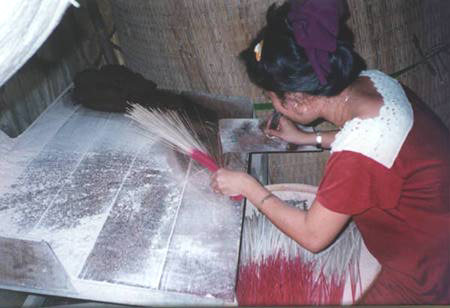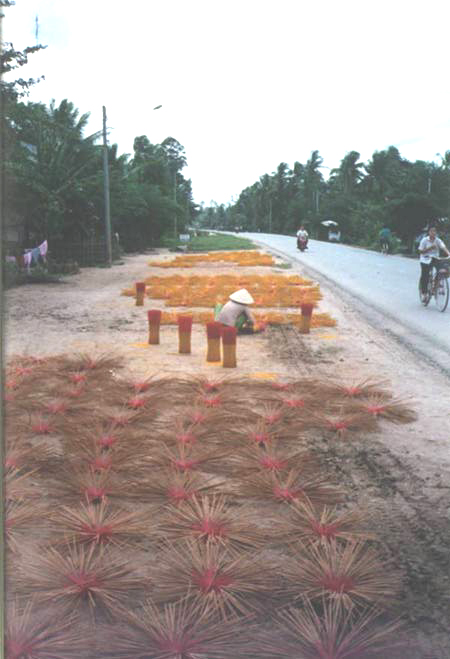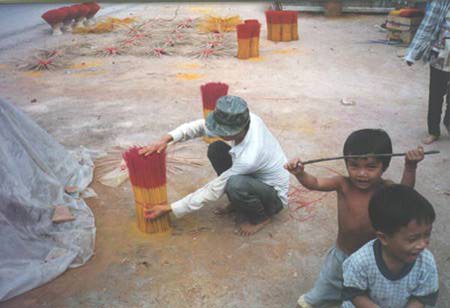
In this short set of pictures (until I find the other's I took) are shown a few of the steps taken along the way to this communal, successful attempt to make incense. Most of this incense is shipped up the river to Cambodia.
Categories of Job specialties run the entire gambet, including (and I'm sure I've left a few out!):

The worker sits at a flat board with a stack of readied bamboo sticks, a glob of glue and saw dust, and a flat trowel. A fine layer of white, dry saw dust or other natural absorbant (flour?) is at hand to roll the finished incense stick in for easier handling until the glue has dried.
During a typical day, a single top-notched worker can produce 12,000 to 15,000 sticks per day. I wrote that number down when they told me! To the best of my knowledge, that is an accurate number. If anyone finds that I've mistranslated or hallucinated, please let me know. But that's the massive production scale that this village was working on.
The worker rolls the bamboo stick with an intuitively calculated amount of glue, which after a bit of practice, is amazingly uniform is quantity. Back in the "old days" when sandel wood was still readily available, it was saw dust from sandel wood that was mixed with the glue, and no further scent was needed. Now, any type of saw dust is used and artificial scent is sprayed on the finished product.

Through and intriguing technique of fanning the stack of completed incense, the bunches are spread out on the shoulder of the road for drying in the sun. These fanned stacks can be laid out and gathered without a single incense stick dropping out of the bunch.
After the prescribed number of hours drying time, the sticks and then re-gathered and once again checked for quality, re-counted and carefully bound up into identical bundles.
Once you've seen this done, entirely by hand, there is a special appreciation mixed in the with whiffs of odor when one lights incense.

There are specific colors representing specific scents. There are unique color combinations that represent the intended market. There's more to making incense than meets the eye.